 Here’s how to make a simple, antipasto board, featuring classic, Italian cuisine. Ideal for parties and only 10 minutes work to prepare. Deliciously tasty!
Here’s how to make a simple, antipasto board, featuring classic, Italian cuisine. Ideal for parties and only 10 minutes work to prepare. Deliciously tasty!
Our cold antipasto board requires no cooking in it’s preparation. If your looking for how to make an antipasto platter it’s simply a matter of buying great ingredients and following our directions below.
Our post features famous delicatessen products from the food bowl of Italy, the Emilia Romagno region. This includes a feature on one of the region’s most famous products, Prosciutto di Parma, as well as some great restaurants and cities to visit if you are lucky enough to be a tourist in the area.
Bologna and the Emilia Romagna Food Bowl
Bologna is a little off the beaten tourist track compared to Florence, Rome and the Amalfi Coast. It is a quick drive, or even quicker train ride, from Milan, into the heart of the Emilia Romagna region. And on the route from Milan, you can stop off at classic, Italian, food towns like Parma, Reggio Emilia, Modena and finally Bologna. Although it has some immense competition, Emilia Romagna is often referred to as being the food bowl of Italy. Our antipasto board showcases some of the best from the region.

Emilia Romagna is famous for foods such as Prosciutto di Parma, featured below, Parmegiano Reggiano, the king of cheeses, Aceto Balsamico (Balsamic Vinegar of Modena), mortadella, tortellini and salamis.
If you are lucky enough to visiting Emiglia Romagna, where should you stay?
Well, if you are into your food, magnificent rural scenery and love history then Bologna is as good a place to center yourself as anywhere in Italy, let alone Emilia Romagna. Even other Italians think the food in this region is fantastic. Upon arriving at our accommodation in Veneto, our host asked where we were coming from. We replied, “Bologna”. She remarked “You must have eaten well then.” And indeed we did!
When we travel we rarely go back to the same country, let alone the same city, always preferring someplace new. And we never go to the same restaurant during a visit, as we like to try new experiences.
However, on this trip we made exceptions to all of those rules. As we were visiting the food-themed Milan Expo, we also took the opportunity to re-visit our old friend, Bologna. And our favorite restaurant in all of Italy (so far anyway) is in Bologna. It is da Cesari, a family-owned, 3rd generation business recently celebrating its 50th anniversary. It was just as good as we remembered on our last visit.

We had a lovely meal of caprese salad (featured in our antipasto board) made from seasonal burrata cheese, rather than the usual but still outstanding buffalo mozzarella. We also enjoyed rabbit ravioli with smoked parmagiano reggiano, veal cheek braised in white wine, escalope of veal with seasonal porcini mushrooms, strawberry sorbet and caramel semifreddo. This was all washed down with a regional red wine. Fantastico!
We have already introduced a couple of the ingredients we will use in our Italian Antipasto Platter: Traditional Balsamic Vinegar of Modena and Parmigiano Reggiano cheese, but we have one last one we need to cover. It is a famous product of the region: Prosciutto di Parma, a form of Italian ham.
What is Prosciutto di Parma?

 The Prosciutto di Parma is a D.O.P. (in Italian) or PDO (Protected Designation of Origin) product. For a product to carry this designation, it must satisfy the rules laid down by the consortium. The PDO mark designates a product, originating from a region and a country, whose qualities and features are essentially or exclusively due to the geographical environment (where environment refers both to natural and to human factors alike).
The Prosciutto di Parma is a D.O.P. (in Italian) or PDO (Protected Designation of Origin) product. For a product to carry this designation, it must satisfy the rules laid down by the consortium. The PDO mark designates a product, originating from a region and a country, whose qualities and features are essentially or exclusively due to the geographical environment (where environment refers both to natural and to human factors alike).
In order to be called Prosciutto di Parma, the prosciutto, must come from pigs raised in Emilia Romagna, Lombardy, Piedmont, Veneto, Tuscany, Umbria, Marche, Lazio, Abruzzo, or Molise. The production of the Prosciutto di Parma must only occur within a precise area within the province of Parma.
This area is recognized for its special micro-climate, caused by the air that blows up from Versilia. As the wind passes olive and pine groves of the Val di Magra it softens and then dries as it reaches the Apennines. It is then enriched by the perfume of chestnut before it arrives in Parma, giving the prosciutto its fabulous sweetness.
To produce Prosciutto di Parma you rub and massage the hind leg of pork with salt in proportion to the weight of the leg. To finish the process, you wash, dry and then leave to age in aging rooms for 10 to 12 months.
Producing Prosciutto di Parma is a big industry around the Parma Province. The table nearby provides some figures.
At Rosa dell’ Angelo, we enjoyed an excellent prosciutto platter, including prosciutto made from an ancient breed of black pig. The pigs are left to live free and wild in the hills, fields and woods foraging on grass, corn, barley and wheat as well as broad beans, berries, roots, acorns and wild herbs.
Some More About Touring Emilia Romagna
Touring in the Emilia Romagna region is a real pleasure. The countryside in late spring is gloriously green and lush. There is agriculture everywhere and it looks healthy. Vineyards, fields of wheat and corn and vegetable gardens. Yes, most families have their own vegetable gardens.
Along the way we stopped at roadside produce stalls to buy fruit and vegetables, practicing our almost non-existent Italian buying all sorts of tomatoes, melons, peaches and more, sourcing many of the ingredients for our antipasto board. Everything seems to have more taste around here.
And it is not just the countryside. Quaint towns dot the region just begging you to stop and walk around. They all have inviting cafes, delicatessens, regular farmer’s markets, piazzas and magnificent churches. It’s a foodies paradise!
And then there are the larger cities, with their many piazzas and stunning cathedrals. These cities are so old and full of history. Large parts of the cities are pedestrian only, where you can admire the old architecture, get away from noisy motor vehicles and just slow down. I wish there was more of that where we come from.
What impresses us most about Italian cooking is how they keep it simple and rely on the quality of the product.
Simple Antipasto Board
So, in honor of the outstanding Caprese Salad at da Cesari, the fabulous prosciutto platter from Rosa Dell’ Angelo and great cheese from a country where there is just a mind-boggling range, we are featuring a simple Italian Antipasto Platter, to celebrate the true taste of beautiful food. It features three outstanding antipasti. They work well together, but each can also be served on it’s own.
1. Parmigiano Reggiano with Balsamic Vinegar from Modena
How can something so simple taste so good? And only 1 minute to put together. It’s called the king of cheeses for a reason and in combination with a good quality balsamic vinegar from Modena, it becomes decadent. Here are some other ways to enjoy parmigiano reggiano
2. Caprese Salad – The Colors of Italy
 It’s just buffalo mozzarella, tomatoes, basil, olive oil and vinegar. But, oh so good. Simple, but the key is to have good quality ingredients, so rather than being good it becomes great!
It’s just buffalo mozzarella, tomatoes, basil, olive oil and vinegar. But, oh so good. Simple, but the key is to have good quality ingredients, so rather than being good it becomes great!
3. Prosciutto with Melon
Don’t be put off by the rather tasteless cantaloupe typically served on airplanes or buffet breakfasts at large hotel chains. When of good quality, it is gloriously sweet and a great combination with the slight saltiness of the prosciutto.
The key to this antipasto board is to make sure your ingredients are of the highest quality by finding a good delicatessen or a good farmer’s market or grow your own vegetables. Yes, they may cost more, but because the ingredients have more flavor and depth, we have found that your meals don’t need to be as large in volume. And the food is better for you, not to mention the great taste!


FREE PRINTABLE SHOPPING LIST
All the specialty ingredients you need to make the Italian recipes on Compass & Fork on one handy printable shopping list.
| Servings | Prep Time |
| 4 | 10minutes |
| Servings | Prep Time |
| 4 | 10minutes |
- Parmigiano Reggiano with Balsamic Vinegar from Modena
- chunks parmigiano reggiano *
- drops balsamic vinegar of Modena *
- Caprese Salad (Buffalo Mozzarella)
- 2 pieces buffalo mozzarella sliced thinly*
- 4 tomatoes small, sliced, the same size as the mozzarella*
- basil leaves
- olive oil extra virgin*
- balsamic vinegar of Modena *
- black pepper, ground
- salt, ground sea
- Prosciutto and Melon
- 4 slices proscuitto sliced thinly and then cut into strips*
- 1 canteloupe cut into small wedges
|
Ingredients
Servings:
Units:
|
- Arrange small chunks of Parmigiano Reggiano on a plate and place a few drops of Balsamic vinegar of Modena over the cheese.
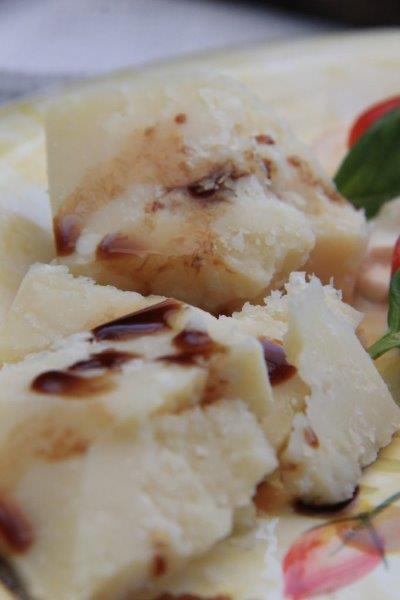
- On a plate, simply arrange a slice of buffalo mozzarella, then a slice of tomato, followed by a basil leaf. Repeat until all ingredients are used.
- Drizzle some extra virgin olive oil over the salad, followed by a few drops of the vinegar. Then very lightly season with black pepper and sea salt.
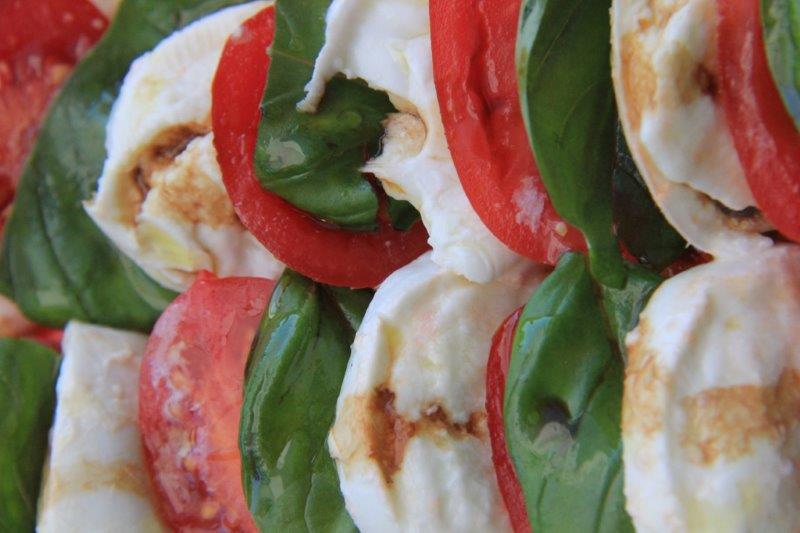
For the Caprese Salad it is important to select tomatoes that are about the same size as your buffalo mozzarella slices. However, the thickness of the tomato slice should be twice that of the buffalo mozzarella.
Find yourself a good delicatessen for Parmigiano Reggiano, balsamic vinegar from Modena, buffalo mozzarella, olive oil and prosciutto. Or you can buy good quality products from the following links:
Parmigiano Reggiano. Parmigiano Reggiano is a long life cheese and will last for 4 months in the refrigerator.
You can buy Balsamic vinegar from Modena here. Or you can buy traditional D.O.P. Balsamic Vinegar from Modena here. There is no shelf life on good vinegar.
You can buy Burrata Cheese from here.
Here is a good US extra virgin olive oil. And here is a good Italian extra virgin olive oil.
Here is sliced prosciutto or you could try here for real, D.O.P Prosciutto di Parma.


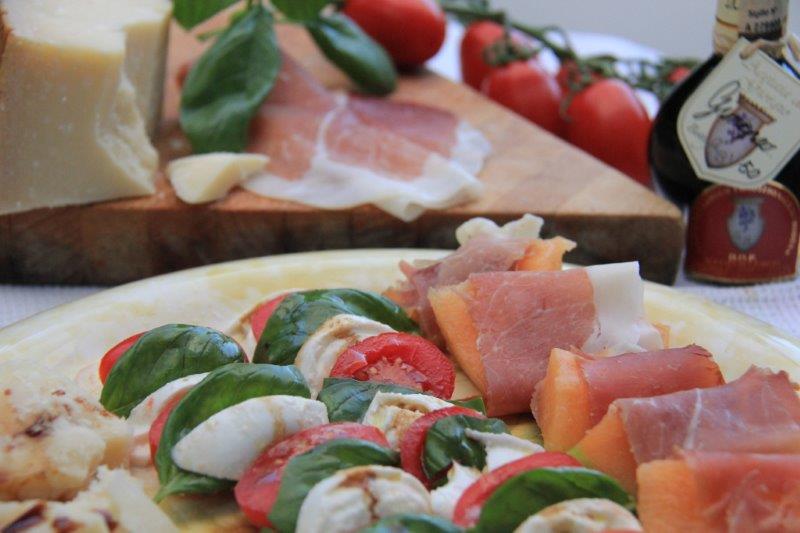
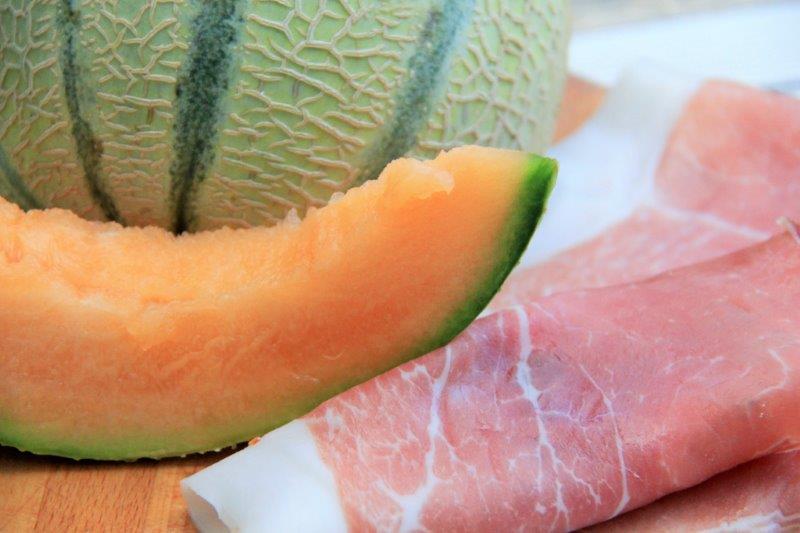
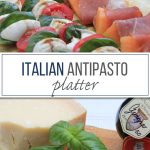
Leave a Reply